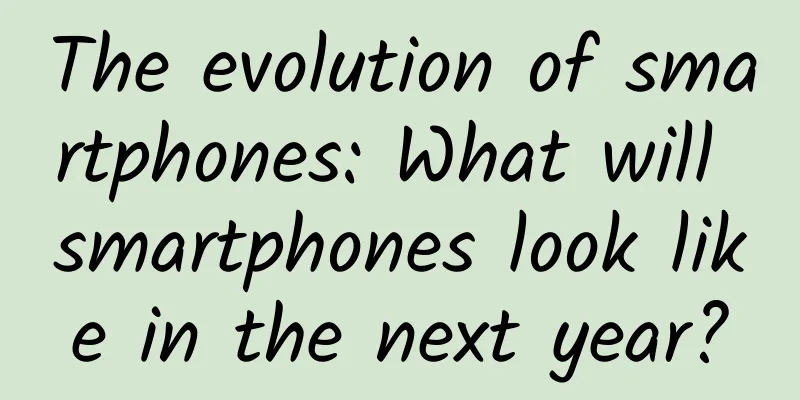The evolution of smartphones: What will smartphones look like in the next year?

|
On December 10, Samsung and Huawei Honor both launched the latest full-screen solution. Samsung calls this solution with a hole in the upper left corner of the screen "black pupil full-view screen", while Huawei Honor calls it "seductive full-screen". Although they are called differently, this type of screen display technology all belongs to the category of "punch screen". Since the "notch screen" equipped with iPhone X became popular in the fall of 2018, more and more manufacturers have begun to explore "special-shaped screens" that can maximize the screen-to-body ratio of mobile phones. The newly unveiled "punch screen" is essentially an improved "notch screen".
Vivo NEX, Honor Magic2 and Xiaomi Mix 3 showed the world the full-screen design with the entire front screen; Samsung Galaxy A2s and Honor V20 have minimized the visual impact of the "special-shaped screen" on users through continuous optimization. It can be expected that in the next year, if there is no epoch-making innovation in screen technology, the shape of mobile phones will continue these two designs, and the traditional full-screen mobile phones with the traditional 18:9 ratio and upper and lower "foreheads" will become less and less. However, compared with the mechanical full-screen design that has received unanimous praise, the punch-hole screen design launched by Samsung and Honor has received mixed reviews. Let's take a look at how the full-screen technology of mobile phones will develop in the future. Punch-hole screen design, a mature compromise As an optimized version of the notch screen, the "punch screen" has the biggest advantages of small area and high screen-to-body ratio. Compared with the full-screen design with no mechanical structure of openings on the front, the body structure of the "punch screen" design has not changed much compared to the "notch screen", which guarantees both design cost and durability. Although the "hole-punch screen" has many benefits and innovations, it has attracted the attention of many media and consumers as soon as it was released. However, when we saw the actual Galaxy A8s with the "hole-punch screen" design, we realized that the reality is so bleak. The camera in the upper left corner can be consistent with the body in the black interface, but it looks very abrupt after switching to the white interface. Due to the hole in the upper left corner of the screen, the display panel adopts an asymmetrical design. Once the user uses the screen rotation function, the picture will look even weirder after rotation. Although the newly-launched “hole-punch screen” has minimized the screen obstruction area, it still has not been able to solve the biggest drawback of the previous notch screen and water drop screen - blocking the screen display content. Regarding this situation, some netizens believe that "widow's peak and water drop screen are more harmonious", and Meizu founder Huang Zhang even publicly stated that "the hole-punch screen 'real machine' that everyone sees now is just a beautiful PS modified picture by various manufacturers or netizens. The real machine will never be as good as the renderings or everyone's imagination." Punch-hole screens are just a passing fad, and full-screen technology can continue to evolve Although the "punch-hole screen" design is not a perfect solution, Samsung and Huawei, as the world's first and second smartphone manufacturers, have their merits in gaining their recognition. Just like the controversial "notch screen" of iPhone X, once the leading manufacturers choose to use this design, other mobile phone manufacturers will naturally follow suit. It can be predicted that in the next year, more and more "punch-hole screen" design mobile phones will appear in the hands of consumers. But both mobile phone manufacturers and users understand one thing: the "punch-hole screen" is just an exploration of the advancement of mobile phone full-screen technology, and full-screen technology will never stop here. The birth of the notch screen, water drop screen, perforated screen and lifting camera are essentially to solve the problem of the front camera opening. Earlier, Samsung released a full-screen solution called Infinity-O at the SDC Developer Conference. According to the figure below, after the perforated screen (Infinity-O), there is another full-screen solution called New infinity. Judging from the sketch, this is a full-screen solution without any openings on the screen. According to foreign media interpretations, New infinity will use under-screen camera technology similar to under-screen fingerprint. The front camera will only appear when it is in use, and will be hidden in the screen at other times, without affecting the user's visual experience. In the competition of mobile phone screen-to-body ratio, is the fuller the screen, the better? Since the launch of full-screen technology for smartphones, major mobile phone manufacturers have been continuously improving the screen-to-body ratio of their products, from 70% to 90%. Every innovation in full-screen technology has become a core selling point. During this period, even the Nubia X with a "screen-to-body ratio of over 100%" was born. Let’s first take a look at the screen-to-body ratios achieved by major mobile phone manufacturers using different full-screen technologies.
Currently, Samsung and Huawei have not officially announced the screen-to-body ratio of their punch-hole screen products, and different manufacturers have slightly different formulas for calculating the screen-to-body ratio. To avoid unnecessary misunderstandings, we will temporarily assume that the screen-to-body ratio of the punch-hole screen is 95% based on the same calculation standard. It can be seen that after several generations of technological changes, the full-screen design with a punch hole design is only 5% ahead of the "notch screen" in terms of screen-to-body ratio. At present, the screen size of mobile phones is generally around 6 inches, and the improvement in visual experience is actually only 0.3 inches. In order to meet the pursuit of screen-to-body ratio by mobile phone manufacturers, consumers must also endure increasingly weird screen display modes. Does this deviate from the original intention of the development of full-screen technology?
With the development of smartphones, the quality of user experience is no longer determined by a full screen with a high screen-to-body ratio. Performance configuration, photo taking experience, body material, system optimization and battery life are all indispensable factors for a smartphone. Mobile phone manufacturers must not go down the wrong path of technology focusing on screen replacement. |
>>: After meeting many buyers in the past six years, can the Hammer smartphone revive?
Recommend
Apple cracks down on ranking manipulation: Taiwan removes apps with built-in points wall
According to reliable sources, Apple Taiwan has r...
Re/code editor tries out iOS 9: Upgrading is not recommended at this time
Apple recently released a beta version of iOS 9 a...
Do webpage titles and article titles mean the same thing?
Student asked: Do the webpage title and article t...
Mantou New Media Operation Certificate Class
A millionaire trader will teach you the core skil...
Google has returned to China with its head down. Can it pay the price for its past willfulness?
Recently, there is news that Google has made a pr...
Why did the three major IPs - "Tiny Times", "Old Boy" and "Boonie Bears" all find LeTV and successfully cross over?
As a winner of Toutiao's Qingyun Plan and Bai...
What role does the operations manager of a mobile game company play?
In the eyes of many people, mobile gaming is a hi...
The Road to Godhood - The Core Secret Method to Conquer Ordinary People
The Road to the Gods: A brief introduction to the...
"Fake" is also very powerful, aerospace simulation products are very useful
Recently, the Indian Space Research Organization ...
Can the elephant's relative fly and walk on walls?
Speaking of the hyrax, friends who like animals s...
Tik Tok short videos are so explosive! So how do short videos attract traffic?
Using short video platforms to create precise tra...
Mobile networks are killing Wi-Fi, survey shows
According to foreign media reports, recently, Man...
A complete App operation and promotion plan!
1. Concept of App operation and promotion Quoting...
Smali disassembly language data types and methods
Introduction to Smali Smali is a disassembly lang...
How much is the price for being an agent of Jinzhong group buying mini program? Jinzhong group buying applet agent price inquiry
Is it easy to be an agent of Jinzhong Group Buyin...









